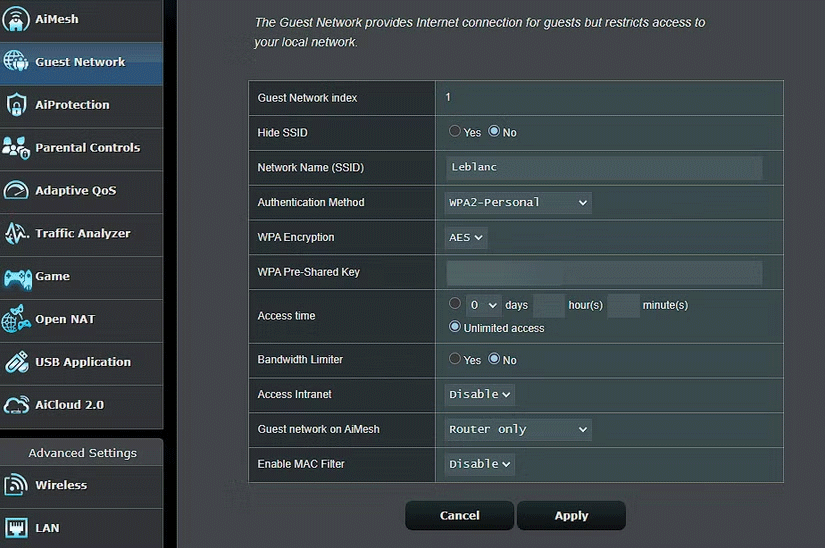How to protect smart devices in your home
An insecure smart home device becomes an easy entry point into your home network. From there, hackers can launch attacks and steal your data from within the network. The consequences are dire, but you can protect your smart home devices before they are compromised.
Change the manufacturer default username and password

Most smart home devices come with default passwords when you buy them. The default passwords are simple and easy to remember, allowing users to access the admin account when setting up the device. However, many of us forget to change these default passwords, leaving our networks vulnerable to attack. It is important to change the default password to something strong, secure, and unique. When choosing a password, you can use tools like Omni Calculator to check the strength of your password.
Some threats, like Brute Force attacks and Rainbow Tables, can crack a password in seconds. So, for an extra layer of protection, you can set up multi-factor authentication (MFA) on your device. The best multi-factor authentication apps can help keep your device secure.
Use biometric authentication
Smart home devices like smart home alarm systems, smart locks (especially for restricted areas in your home), or smart devices that hold sensitive financial information will benefit from biometric authentication.
Instead of passwords that can be cracked or forgotten, biometric authentication uses a person's biological characteristics such as fingerprints, voice, or facial recognition to control access. Biometric characteristics are difficult to fake and are unique to each individual, so they are a more secure alternative to traditional identity verification methods.
Use a guest network for smart home devices and limit access to devices
Segmenting smart home devices can increase network security by isolating them from the main network. If your smart home devices are compromised, segmentation can make it harder for hackers to access other devices. This limits the damage in the event of a breach. PCs, laptops, phones, and other devices that store sensitive data can be securely connected to the main network. Guest networks can isolate smart home devices with less robust security features.

You need to limit and control who has access to your smart devices. Using the principle of least privilege (POLP), limiting access to a small number of people, or controlling access for some people, such as limiting what they can do to the bare minimum (or only what they need), will reduce the attack surface of the network.
Turn off device features you don't use
Turning off features like video, audio, Bluetooth, geolocation, and other features you don't use often limits the data your device collects and stores. It also reduces the attack surface that hackers can exploit. For example, turning off Bluetooth reduces your risk of being targeted for various Bluetooth attacks like Bluesnarf, BlueSmack DoS, or Blue Dump.
You should enable a lock screen on your device to prevent unauthorized access to your device. Shorten the lock time so that it automatically locks when the device has not been touched for a few minutes. Instead of a passcode, use a pattern lock, which can be harder to guess. For another layer of security, reduce the number of attempts allowed so that data thieves only have a few guesses.
Enable automatic software and firmware updates
Devices that are not designed with automatic updates should be checked manually on a regular basis. Patches and updates are designed to address security vulnerabilities, and installing them as soon as they are available will reduce the risk of being targeted. Make sure you download updates or patches from the manufacturer's official websites. Unauthorized updates from unofficial websites may introduce malware, spyware, or adware.
You should read it
- Authenticate what two factors are and why you should use it
- Quickly download and use ESET SMART SECURITY® for 6 months free of charge
- Smart home technology and unpredictable hazards
- Amazon acquired Ring, increased security for smart home products
- Things to consider before buying a security camera for your home
- How to secure Linux Ubuntu with two-factor authentication
 How to Choose a Mattress: Features Worth the Money and the Waste of Money
How to Choose a Mattress: Features Worth the Money and the Waste of Money How to find the nearest Auto Garage
How to find the nearest Auto Garage 9 Essential Tech Gadgets for Working from Home
9 Essential Tech Gadgets for Working from Home Mistral AI launches Android and iOS versions of chatbot Le Chat, what's interesting?
Mistral AI launches Android and iOS versions of chatbot Le Chat, what's interesting? Latest instructions for looking up fines on Telegram
Latest instructions for looking up fines on Telegram Baby Three Drawing Collection with Step by Step Instructions
Baby Three Drawing Collection with Step by Step Instructions